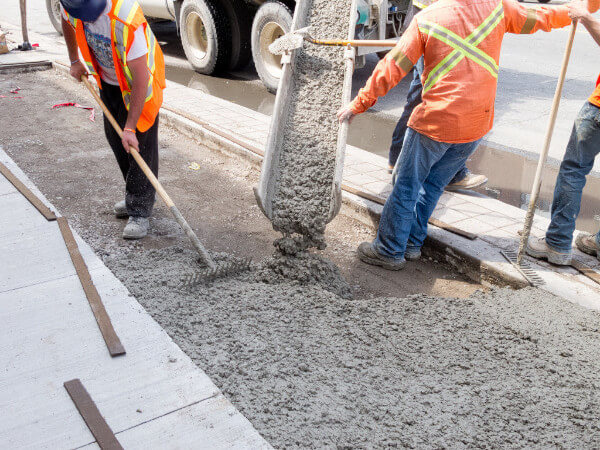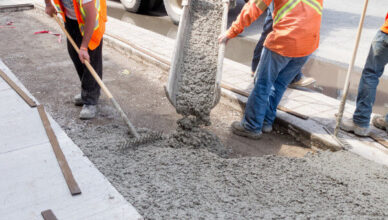Treating about 80% of San Francisco’s water since 1952, the Southeast Treatment Plant has been a critical structure for sanitizing the wastewater of San Francisco. However, the plant has been around for years, and now, many of its facilities need an upgrade.
Knowing this, the San Francisco Public Utilities Commission has started modernizing the plant. Part of this transformation includes replacing the treatment plant’s headworks facility with a new one. That will ensure the treatment plant will be able to more effectively remove debris and grit from the water while meeting the current seismic standards.
To construct this more modern headworks facility, the San Francisco Public Utilities Commission has collaborated in a joint venture with The Walsh Group Ltd. and Sundt. And we are pleased to note that we are helping The Walsh Group Ltd. optimize their work in this venture with our Maturix Smart Concrete Sensors.
Our Maturix specialist, Kris Till, got to discuss this in a recent video interview that he conducted (which you can see here). And in this article, you’ll get to see that discussion along with some extra details on the topic.
Why don’t we get started by having you tell us who you are, who you work for, and what you’re building?
My name is Tanner Santo. I’m a superintendent for The Walsh Group here in San Francisco, California. We are building the new headworks for the Southeast Treatment Plant. It’s going to be up to a 300-million-gallon-per-day capacity in the wet season. We’re looking at probably a good two years of structural concrete, which will primarily be my focus.
What do you consider to be the most important factor when building a project like this?
I think one of the biggest things I look for as a superintendent is to maintain efficiency while also preserving quality. There are a lot of moving parts and challenging logistics on this project. And what we need to do is just get our crews into a rhythm.
So, why are you monitoring concrete in this project?
That’s actually a very good question. We’re doing a lot of vertical walls on this job. I think we have 300 to 400 different wall placements. And the big thing for us is that we cannot strip those forms until we reach a minimum compressive strength.
What would you have done in the past to monitor your concrete compressive strength?
So, in the past, in situations like this, we pour a wall, say on a Monday, and take a bunch of concrete cylinders. By Tuesday morning, they’re sent off to a lab. If I want early breaks to remove the formwork, I need to take extra cylinders.
The extra cylinders can be costly when you talk about hundreds of wall placements. So taking and breaking extra cylinders for every placement adds up very quickly.
What’s even more of a hassle is getting those break results. So if I put in a 30-foot-tall [9.14-meter-tall] concrete wall on a Monday, Tuesday morning, I’m waiting on a testing lab to give me early breaks back, and what I need them to tell me is that the concrete has reached a minimum strength. So in that morning time when I’m waiting for a break result or for the testing lab, I have a crew of guys who are basically not being efficient. They can’t strip the formwork yet.
nd what’s your current concrete monitoring process like now?
We put a few thermocouples with the Maturix Sensors into the wall at the time of placement, and thanks to the maturity curve that we’re able to calculate with the help of CEMEX, our concrete provider, we actually get a live readout of compressive strength. If we had never run this maturity curve for these sensors or monitored the live compressive strength with the sensors, I don’t think we ever would have realized how quickly we were getting concrete strength on this job.
It gives me a lot of temperature data as well. Had those sensors not been there, we wouldn’t have realized that we are working with a relatively hot mix. We now exercise some caution with some of those thicker placements that I don’t think we ever would have previously because we just wouldn’t have known what type of internal temperatures we were getting on this job. That information alone has been a big help as far as planning and scheduling goes.
It’s even so streamlined that I have notifications set up to my cell phone. I’m not waiting on a call from a testing lab. I’m not hounding a testing lab. I actually get a ding on my phone, but on this project, it’s a bit unique. It’s actually kind of in the middle of the night or the early, early morning when it tells me that a wall has reached 1,250 psi [8.62 MPa]. That way at 7 am, when the guys show up to work, we’re not waiting on anything. We immediately get to work taking the forms off. I know the wall has reached a compressive strength where it’s safe to do so. There’s really no second-guessing anything. And that helps with the logistics of cranes and organizing manpower.
Why did you specifically choose Maturix?
What made Maturix the number one choice was just the cost-effectiveness of it. A lot of the competitors have one-time-use sensors where you’re paying up around $100 a sensor and you embed it into the concrete. In every single pour, that’s $100 down the drain whereas Maturix technology is actually better because I don’t have to go around and capture the data with Bluetooth. It’s all done over a cloud network. It’s sent directly to my phone like I mentioned. I don’t have to pay someone to go around and collect data via Bluetooth. So in reality, I’m paying less for a better product.
So it seems Maturix offers cost-effective concrete compressive strength and temperature monitoring. It also documents everything related to this. Has that helped you with quality control procedures?
Yeah, definitely. It just basically organizes all our pours. I mean, I can go back to stuff I poured a month ago and see that Maturix records the exact time of placement.
What would you tell someone who is considering Maturix?
It’s streamlined. It’s easy. As far as cost-effective, it’s not even close compared to the competitors out there with the one-time-use sensors. And the labor you save in collecting the data is also a huge cost saving as well. So we’ve just been very happy with what these sensors have provided for us here.
Thank you so much for taking the time to talk with us. We really appreciate it.
No problem. You guys are helping us out a lot on this project. We got a good thing going here, so I’m happy to help out.
*Banner photo by Pi.1415926535, CC BY-SA 4.0 , via Wikimedia Commons

The post Interview: Optimizing Concrete Compressive Strength Monitoring for a Treatment Plant appeared first on Kryton.
Did you miss our previous article…
https://www.bellanovatravel.net/?p=234
